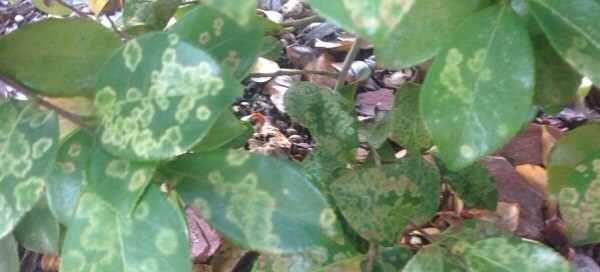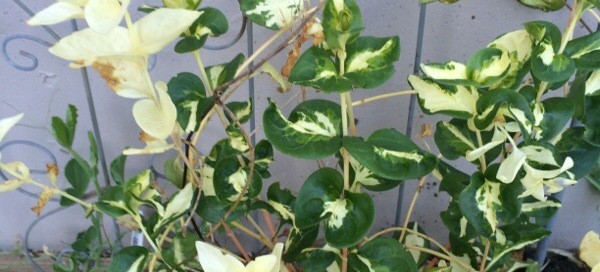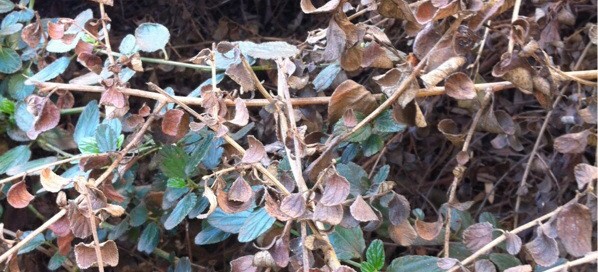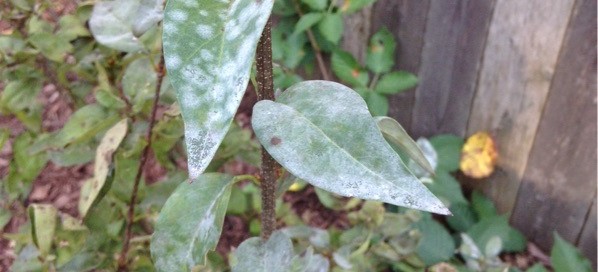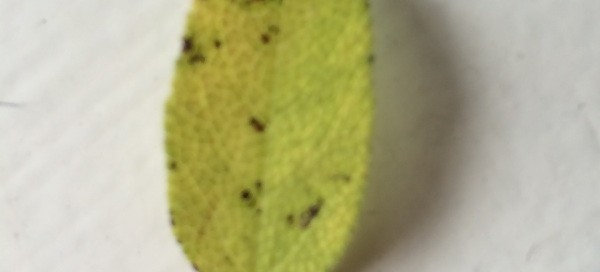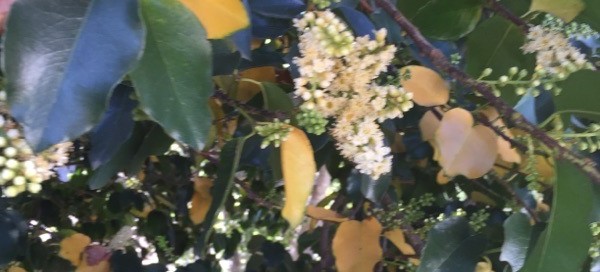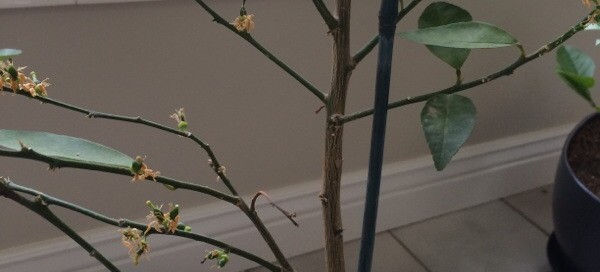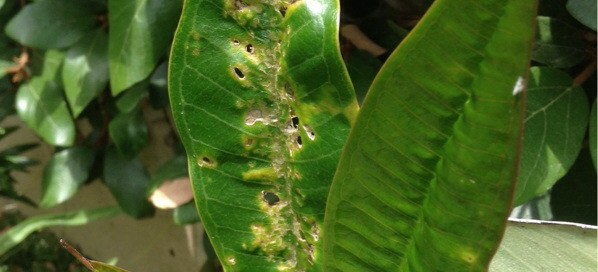Yellow Spots On Camellia Leaves
Sorry for the delay in responding to your Camellia problem. We spent some time on this but cannot say definitively what the cause is. Camellias are susceptible to various diseases, including Oedema (wart like spots that develop on leaves due to environmental conditions), viral pathogen that can cause yellow "mosaic" patterns in leaves, (but yours doesn't really look like that one), and fungal diseases (algal leaf spot). We are also wondering if this could be the result of something applied to or near the plant, like a pesticide or liquid fertilizer, or a weed control product? The best way for you to get a good answer, and what we recommend, is that you take this picture and a plant sample (in a sealed bag) to a garden center, or to your local Dept of Agriculture office, or to your local Master Gardner's Group or to your local farm & home advisor's office (this is one link we found from NCSU - you may be able to find one close to you). Please let us know what you find out! http://wake.ces.ncsu.edu/
